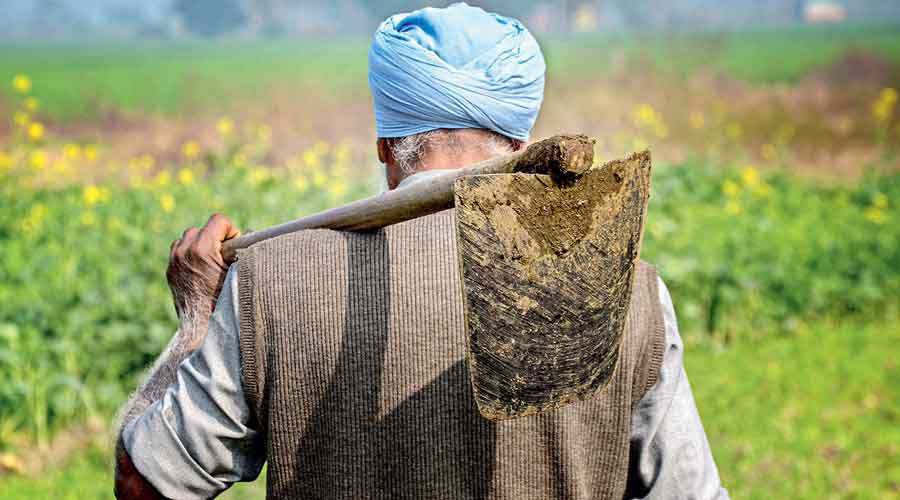How do you insure against weather risks to crops if you are a small farmer? It is a question Indian farmers and policymakers have been trying to answer for almost five decades. India has tried multiple models of crop insurance without a workable panacea.
In a large part, farmers continue to shoulder crop losses and the governments in the states and at the Centre try to offset some of it by paying a compensation — a political dole at best.
The Narendra Modi regime has increasingly leaned on crop insurance as a preferred way to insure crop losses in the market framework. Policymakers think it is the best route to shield farmers.
Not so. Crop insurance — leave aside for a moment the sudden shocks emerging out of market volatilities that are not insured — is not a best-case-scenario.
The much-promoted Pradhan Mantri Fasal Bima Yojana is not working on the ground to the best interest of anybody; neither the farmer nor governments or the insurance providers.
Since its launch in 2016, farmers pay about 2 per cent of the premium for kharif crops, while the state-Centre bear the rest, but the number of farmers opting for it is on a decline if the data on the PMFBY website is to be believed. On the field, the scheme is marred by delays in claim settlements, failure in recognizing localized weather events and stringent conditions for claim settlement. Also, in many districts, it has no takers from insurance providers.
In such a context, where the basic objective to shield the peasantry against climate events is unmet, a change in guidelines in the Beed district as a model case needs a closer look. The district in Maharashtra falls in an arid, rain shadow zone, a low rainfall area across vast stretches of north, central and western parts of the state. In that district, like many others, the PMFBY turned out to be non-profitable for companies and cumbersome for farmers.
Therefore, in 2020, no insurance company came forward to bid for the PMFBY in Beed given the spectre of losses, prompting the state agriculture department to tweak the guidelines. First, the state-run Indian Agricultural Insurance Company was urged to implement the scheme. It provided a cover of 110 per cent of premium collected, with caveats. If the compensation exceeded the cover provided, the state government would pay the bridge amount. If the compensation was less than the premium collected the insurance company would keep 20 per cent of the amount as handling charges and reimburse the balance to the state government.
That year, Beed collected a premium of Rs 803.65 crore (of which the farmers’ share was Rs 60.82 crore), and it turned out to be a normal season. After settling the kharif claims of Rs 8.61 crore, insurance companies reimbursed the state government a sum of Rs 6341.41 crore from the collected premium after deducting Rs 160.63 crore as handling charges. In the future, the state could dip into the same funds to incentivize the companies in the advent of a bad year.
Even in that model, farmers may not benefit much, but the state saves its money in a good year, and the insurance provider does not suffer losses in a bad year.
For over a year, Maharashtra has tried to lobby with the Centre to allow it to test this revamped model in other districts, but to no avail. It needs the Centre’s approval because the latter pays most part of the premium. What the Beed model suggests is that one-size-fits-all solution may not work on the ground.
The PMFBY needs flexibility to evolve local variations, including looking beyond crop insurance or using it in combination with other interventions, to insure farmers from the growing risks.










